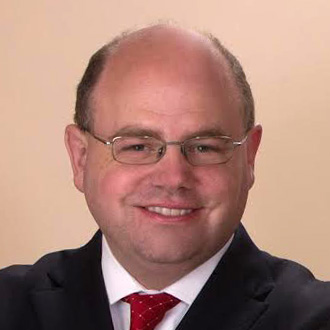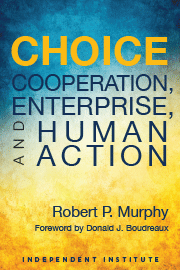Since the fall of 2008, I have been among the economists, many from the Austrian tradition, warning the public about the disastrous policies enacted by the Federal Reserve in response to the financial crisis. The Fed was generating unprecedented increases in the monetary base, which is the quantity of dollars held by the public as currency and held as reserves by commercial banks. In late 2009, I made a public wager with economist David R. Henderson in which I predicted a 10 percent year-over-year increase in the Consumer Price Index by January 2013. I lost that bet. In general, warnings about price inflation seem to have been premature at best, totally wrong at worst.
It’s true that consumer prices did not zoom up as I had predicted, but my objection to the Fed’s post-crisis policies was never dependent on that specific forecast. Indeed, the distinctive feature of Austrian business cycle theory is that “easy money” causes the familiar boom-bust cycle by affecting relative prices. Regardless of the purchasing power of the dollar, the Fed’s actions have definitely interfered with interest rates, hindering the communication of information about the condition of the credit markets. By postponing needed readjustments in the structure of production, the Fed’s actions have allowed the problems apparent in the fall of 2008 to fester.
I am still confident that a day of price inflation reckoning looms and that the U.S. dollar’s days as the world’s reserve currency are numbered, though I have no way of gauging the duration of this calm before the storm. Still, my 2009 predictions about consumer price inflation were wrong, and it’s useful to analyze why.
At the time, I thought the Fed’s policies were simply going to kick the can down the road and exacerbate the underlying structural imbalances in the economy. The housing bubble had itself been fueled by the artificial monetary stimulus and rate cuts under previous Fed chair Alan Greenspan (in response to the dot-com crash and the 9/11 attacks), and Bernanke seemed to be drawing from the same failed playbook. We would simply replace one bubble with another: in this case, swapping a bubble in U.S. Treasuries (and the U.S. stock market) for the collapsing housing market.
That all still seems true. My crucial mistake back in 2009 was in predicting that other investors would come to agree with my assessment in a year or two. In other words, I thought they would look ahead, realize Bernanke had no exit strategy, and then short the dollar (and other dollar-denominated assets) to avoid holding the bag. More specifically, I thought that commercial banks would eventually realize they needed to get their excess reserves in higher-yielding assets.
Once the commercial banks started this process, the quantity of money in the broader sense (captured in aggregates such as M1 and M2, which include the public’s checking account balances at the banks) would begin to reflect the enormous spike in the monetary base the Fed had directly engineered. Remember that in our fractional reserve banking system, when the Fed buys $1 billion (say) in assets and thereby adds $1 billion in new reserves to the system, if the commercial banks proceed to make new loans, then in the process they will create (say) an additional $9 billion in new money, broadly measured. In 2009 I thought more and more investors would begin to anticipate this process, anticipating that the money supply held by the public eventually would start to soar, so that large-scale price inflation would become a self-fulfilling prophecy.
But the U.S. economy has stayed in this holding pattern, where people expect low consumer price inflation and so commercial banks keep their excess reserves earning 25 basis points parked at the Fed rather than make new loans. Thus the process I described above has been thwarted; the quantity of money held by the public right now is much lower than it would be, if the banks decided they would rather make loans and earn a higher interest rate than the 25 basis points currently paid by the Fed.
I do not believe the Federal Reserve can gracefully exit from its current position. Fed officials eventually will be in an untenable position in which they must choose to either (a) crash the financial markets by selling off assets and letting interest rates rise sharply or (b) let the dollar fall quickly in value against consumer goods and services. But in the last six years, they have been granted a very generous grace period before having this hard choice foisted upon them.
According to Austrian business cycle theory, as developed by Ludwig von Mises and elaborated by Friedrich Hayek (who would later win the Nobel Prize partly for this work), interest rates serve a specific purpose in a market economy. Intuitively, the more society saves and is willing to defer immediate gratification, the more we want entrepreneurs to invest real resources in longer-term projects. When the central bank injects new money into the credit markets, this not only lowers the purchasing power of money (other things being equal) but artificially suppresses interest rates and renders long-term projects profitable that in reality should not be pursued.
In the Austrian view, therefore, consumer prices are not a reliable gauge of the “looseness” or “tightness” of monetary policy. Irving Fisher infamously thought the Fed in the 1920s had done a good job because the CPI had been tame, whereas Mises knew that a crash was brewing by the late 1920s.
Fearing an imminent spike in consumer prices because of the Fed’s unprecedented actions since late 2008 turned out to be wrong-but if wrong in spirit or merely in timing, only time will tell.
Bernanke’s policies were harmful regardless of the impact on the CPI. Pumping enormous amounts of money into the credit markets doesn’t make us richer. It just distorts the coordinating function of interest rates. Remember, Greenspan did us no favors by pumping up the housing bubble. Whether or not a massive bout of price inflation breaks out, a crash in the real economy should still be expected.









